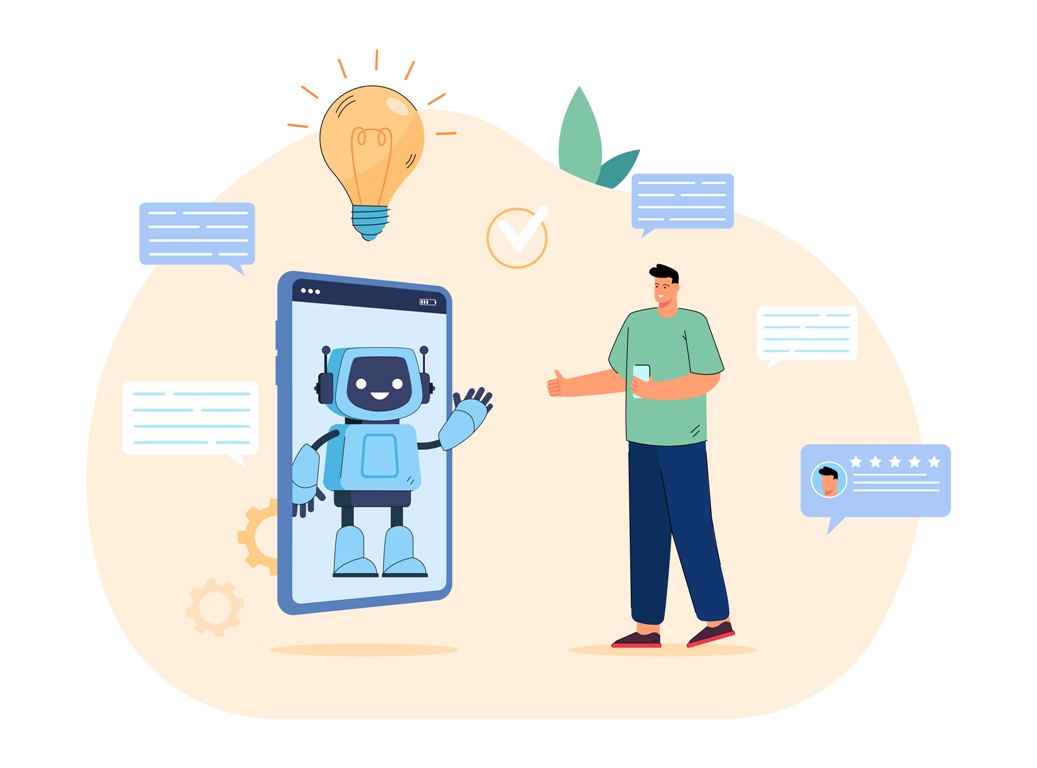
Table of Contents
Conversational AI refers to a group of technologies that allow computers to perceive processes and respond to speech or text inputs in a natural fashion. It’s frequently used in conjunction with bots or intelligent virtual agents [IVAs].
When done correctly, it allows users to connect with complicated systems more quickly and easily while also allowing businesses to provide individualized engagements and support at scale.
Natural language processing [NLP] and machine learning are combined in conversational AI. Conversational AI contains key components that enable it to process, comprehend and respond naturally.
These NLP procedures feed into a continual feedback loop with machine learning processes allowing AI systems to develop over time.
The conversational AI platforms allow companies to develop chatbots and voice-based assistance, which helps them improve their customer service. Conversational AI has many business applications, and it can be used to generate leads and retain such customers.
Such platforms help businesses to integrate virtual assistance into various website messaging platforms, mobile apps, and other channels. The most common example is while visiting a website when we see a friendly FAQ bot.
Other conversational AI like Amazon Alexa and Apple’s SIRI is more popular nowadays.
AI or artificial intelligence works best when fed with the data in text form. But in our world, not every kind of data is present in text form. It is usually present in the form of words spoken on video or audio recordings or even in life. This is why AI plays a very important role in voice transcription.
Voice-to-text transcription has already been an established business form that is usually used in medical, legal and media fields especially. Transcriptors used to charge $3 or $4 per minute. So with the introduction of conversational AI, a lot of transcriptor’s jobs were in danger. This is because, for AI, it is a very simple job that is to translate voice to text.
But accuracy becomes the most important transcription factor. Everything that is told in the audio must be transcribed in the exact manner in which it is told. But the AI only has limited features.
For example, if the audio is murky or has some kind of disturbance in the background, it cannot be done accurately by the AI. On the other hand, human beings can work much better in situations like this, which is why human transcriptions are still in need today.
Transcription is a work-from-home job. The transcriptionist usually receives a piece of audio that they have to listen to and type whatever is being said. They may be required to write word for word or sometimes just the key points.
The transcription organizations usually receive audio from researchers, doctors and lawyers as clients. Then they are sent out who the transcriptionists are. Replace conversational AI and find great transcription jobs in the UK.
Become a transcriptionist today and take it up as your part-time job!
Conversational AI is a groundbreaking technology that revolutionizes communication. It enables intelligent interactions and seamless conversations, offering a glimpse into the future of interaction. Understanding how Conversational AI works unveils its incredible power and opens up a world of possibilities.
When running a business one of the best is deciding how to manage its finances.…
Banking-as-a-Service is a versatile financial technology that can provide several benefits and solutions for companies.…
Manned security is the presence of a trained security guard on a property to ensure…
Those who plan to register Swiss companies often decide to register their trademark in Switzerland…
London ranks as a world-leading startup hub, which means that many entrepreneurs living there have…
It's no secret that winning poker games is a lot of fun. But you may…